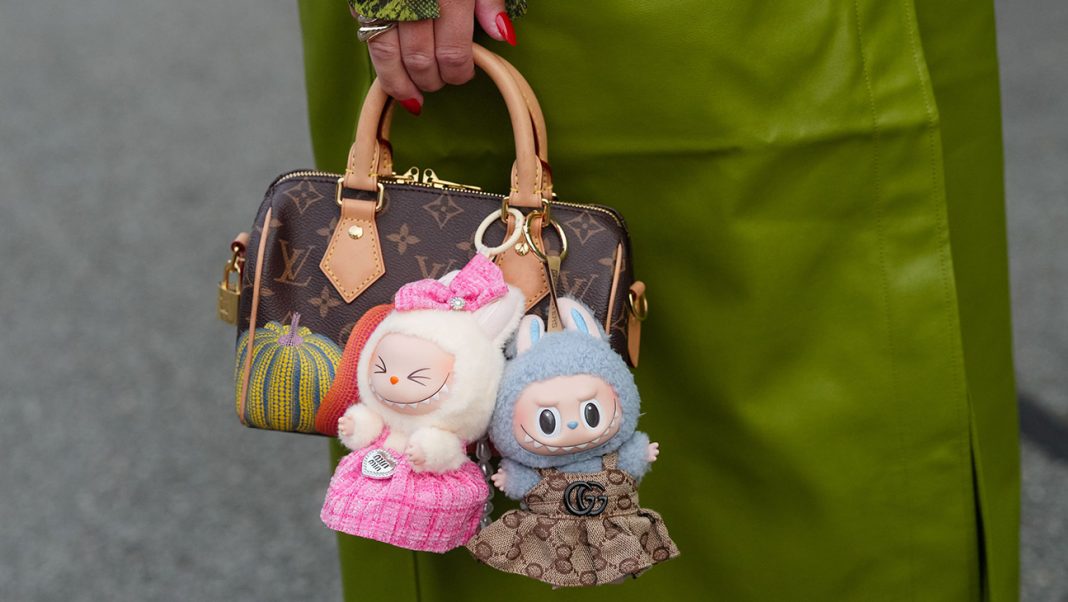Big news echoing across the pop culture landscape has sent a ripple of excitement and curiosity through collectors and cinephiles alike: Sony Pictures is reportedly developing a movie based on the beloved art toy character, Labubu. For those unfamiliar, Labubu is the mischievous, toothy elf from Kasing Lung’s “The Monsters” series, most famously popularized through Pop Mart’s blind box phenomenon. This announcement isn’t just a quirky blip on the radar; it’s a significant nod to the burgeoning power of designer toys and their crossover potential into mainstream entertainment.
Labubu’s Leap: From Blind Boxes to Blockbusters
The journey of Labubu from a niche art toy to a major studio film project speaks volumes about the shifting tides in intellectual property. For years, Labubu and its companions have captivated a global audience, cultivating a fiercely loyal fanbase through limited-edition releases, unique aesthetics, and the thrill of the blind box reveal. The character’s distinctive design—a playful blend of adorable and slightly menacing—has made it an instantly recognizable icon in the collectible world. But what makes it ripe for a cinematic adaptation now?
The answer lies in its existing cultural footprint and inherent narrative potential. While Labubu doesn’t come with an exhaustive comic book lore or a decades-old animated series, its very essence—mischief, curiosity, and a sense of belonging within its “Monsters” universe—provides a rich canvas for storytellers. The success of other toy-based films, from the meta-brilliance of The LEGO Movie to the cultural phenomenon of Barbie, has undoubtedly paved the way, demonstrating that compelling narratives can spring from unexpected sources, especially those with strong visual identities and built-in fan communities. As one collector, Anya Sharma, shared, “I’ve always loved Labubu’s mischievous energy, but I never imagined seeing it in a full-length movie. I just hope they capture that unique charm and don’t dilute what makes it special.”
Sony’s Vision: Crafting a Narrative for a Non-Verbal Icon
Sony Pictures’ involvement is particularly intriguing. Sony Pictures Animation has a track record of pushing creative boundaries, exemplified by the groundbreaking visuals and storytelling of the Spider-Verse films and the inventive charm of The Mitchells vs. the Machines. This suggests that the Labubu movie might not be a straightforward, safe adaptation but something more visually innovative and character-driven. The challenge, of course, will be translating a largely non-verbal character, whose appeal often lies in its static pose and expressive eyes, into a dynamic, feature-length narrative.
This endeavor opens up a world of possibilities. Will the film lean into the whimsical, almost dreamlike quality of Kasing Lung’s art? Will it explore the broader universe of “The Monsters,” giving voice and backstory to characters previously only known through their sculpted forms? Sony has the resources and the creative talent to build an entirely new mythology around Labubu, appealing not just to existing fans but also to a new generation unfamiliar with the blind box craze. It’s a bold move, banking on visual charm and an established, though niche, brand recognition to create a universal story.
The Bigger Picture: IP, Collectibles, and the Future of Entertainment
Beyond Labubu itself, this news is emblematic of a larger trend: the increasing value and adaptability of modern intellectual properties, even those originating outside traditional media. The art toy market, once a subculture, has exploded into a global phenomenon, demonstrating that strong character design and a passionate community can be just as potent a foundation for media expansion as a classic comic book. Studios are constantly scouring for fresh, culturally relevant IPs that can translate into lucrative franchises across film, television, gaming, and merchandise. Labubu represents a new frontier in this search—a character whose existing appeal is primarily visual and experiential, now poised to explore the depths of storytelling.
The success of the Labubu movie could very well pave the way for other beloved art toy characters and designer IPs to make their jump to the silver screen, further blurring the lines between collectible culture and mainstream entertainment. It’s a testament to creativity’s power to transcend mediums, proving that a compelling character, regardless of its origin, can find its voice on the biggest stage.
The road ahead for Labubu’s cinematic debut will be watched closely by fans and industry observers alike. It’s a high-stakes gamble with immense potential, promising to either elevate an art toy icon to global stardom or serve as a fascinating case study in the ever-evolving landscape of IP adaptation. Either way, it’s big news that’s anything but small.




